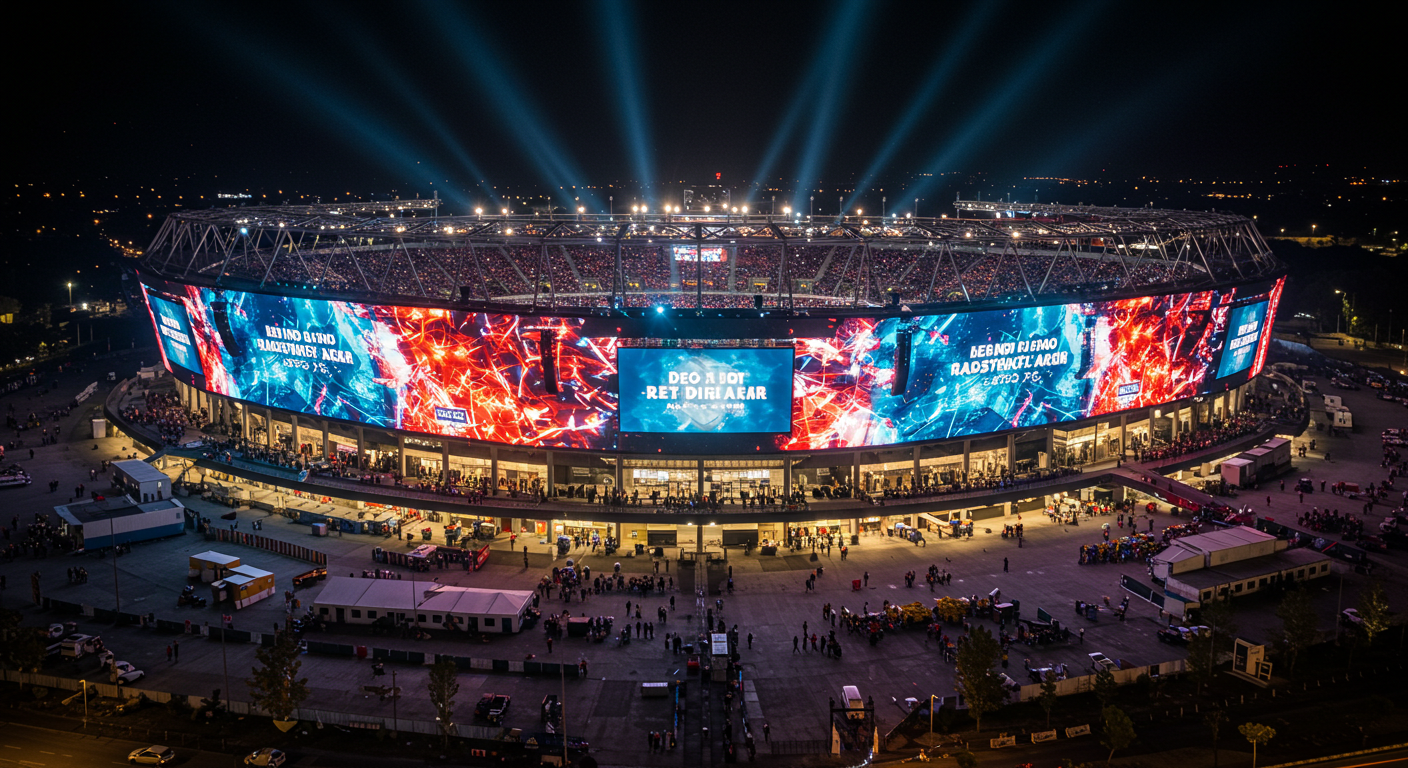The roar of the crowd. The smell of grass and popcorn. The tension of a penalty kick. These are the timeless elements of the stadium experience. But something new has been added to this ancient ritual: light. Not the harsh glare of floodlights, but the pulsing, intelligent, emotional glow of massive LED screens that have turned modern stadiums into cathedrals of collective feeling. These are not mere scoreboards; they are the beating heart of the arena, the digital drum that sets the rhythm for 60,000 souls.
Gone are the days of static numbers and flickering replays. Today’s stadium screens are towering walls of light, often wrapping around entire ends of the field, displaying not just the game, but the emotion of it. When a goal is scored, the screen doesn’t just show the replay—it explodes. Confetti rains down in digital form. Flames erupt around the player’s name. The crowd’s roar is visualized in waves of color that crash across the display. It’s not information; it’s amplification. It takes the raw energy of the moment and magnifies it, reflecting it back to the crowd until the entire stadium vibrates with shared euphoria.
The engineering behind these behemoths is staggering. They must be bright enough to be seen in the blinding noon sun, yet gentle enough not to blind night viewers. They must be weatherproof, dustproof, and vibration-resistant, built to withstand not just the elements, but the seismic energy of a jumping, screaming crowd. They must refresh at lightning speed, with zero lag, so that the replay you see is perfectly synchronized with the cheer erupting around you. Failure is not an option; a single dark panel in a sea of light is a scar on the experience.
But beyond the specs, it’s the psychology that fascinates. These screens don’t just show the game; they direct the crowd. They cue the wave. They display lyrics for the anthem. They zoom in on a fan’s ecstatic face, turning a private moment into a public celebration. They create a feedback loop: the crowd reacts to the screen, the screen reacts to the crowd, and the energy spirals upward. During halftime, they become stages for interactive games, trivia contests, or dazzling light shows that keep the energy alive even when the players are off the field.
The most powerful screens understand silence, too. In a moment of tribute, they dim to a respectful glow, displaying a single name or image. In a tense penalty shootout, they go dark, focusing all attention on the pitch, then erupting in a single, synchronized flash the moment the ball hits the net. They are conductors of emotion, masters of timing, turning a sporting event into a multi-sensory ritual.
In this digital age, where so much of life is experienced through isolated screens, the stadium screen does the opposite. It unites. It takes 60,000 individuals and forges them, for 90 minutes, into a single, roaring entity. It is the campfire around which the modern tribe gathers, not to escape reality, but to feel it more deeply, more collectively, more gloriously than ever before. The game is played on the grass, but the soul of the stadium lives on the screen.



